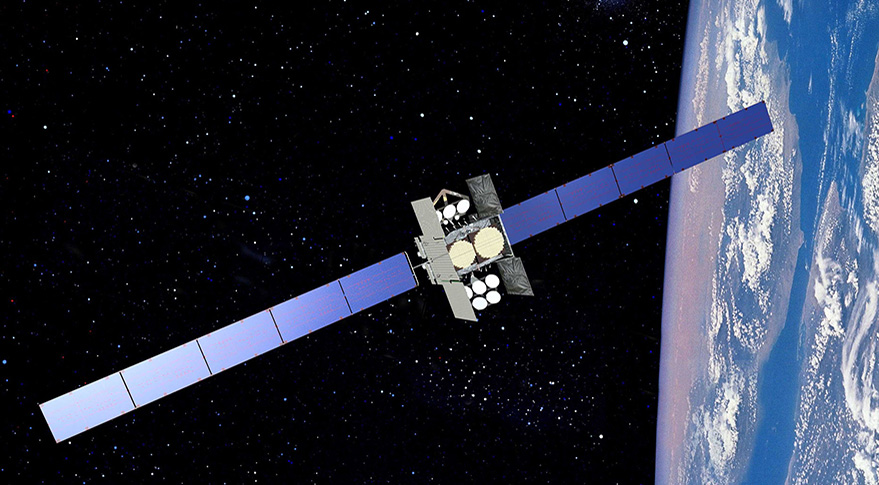Omnibus Spending Bill Funds Big-Ticket Military Communications Satellites That DoD Did Not Request

WASHINGTON — In a surprise last-minute add-on, House appropriators included $600 million in the Air Force budget for two high-capacity communications satellites made by Boeing that the Pentagon did not request.
The omnibus appropriations bill for fiscal year 2018 funds two Wideband Global SATCOM satellites, WGS-11 and WGS-12. The Air Force did not request funding for these spacecraft nor were these satellites included in any previous marks of the congressional defense committees, or in the fiscal year 2019 budget request.
This was a very large "out of cycle" addition, the consulting firm Jacques & Associates said in an email.
This action caught the satellite communications industry completely off guard. Commercial satellite services providers, particularly, had been told that the Pentagon would not buy any more WGS satellites beyond number 10. WGS-9 was deployed last year, and WGS-10 is scheduled for launch in 2019. Air Force and DoD officials had been talking for months about a plan to move forward with a "hybrid" architecture for future military communications that would include a mix of government-owned satellites and commercial services. [The Most Dangerous Space Weapons Concepts Ever]
The appropriators justified the additional funds for "Wideband Gapfiller Satellites" as a necessary hedge, to ensure the Air Force is able to recapitalize multiple constellations that will require replacements in the coming decade — space situation awareness, positioning, navigation, and timing, weather, missile warning, wideband communications and protected communications. The bill directs the secretary of the Air Force to "provide a report to the congressional defense committees not later than 60 days after the enactment of this Act, that examines the recapitalization plans for the major systems noted above, certifies that decisions to recapitalize versus continue production of current designs pose acceptable risks to constellation sustainment and the acquisition workforce, and considers budgetary constraints."
In another blow to commercial satellite providers, the bill cuts funding for the "analysis of alternatives" study that has been underway since 2016 to examine ways to bring more private-sector services into the military's communications architecture. The bill slashes AOA funding for fiscal year 2018 from $14 million to $7 million.
The WGS constellation started out as a short-term project but grew over time. Boeing was selected to build the first two satellites in January 2002. The Pentagon at the time was planning a sophisticated new constellation called the Transformational Satellite Communications System. The TSAT was canceled in 2009 after years of cost overruns, and the WGS then became the military's largest satcom system.
Get the Space.com Newsletter
Breaking space news, the latest updates on rocket launches, skywatching events and more!
WGS is now a multinational system. Through multilateral agreements, Canada, Denmark, Luxembourg, the Netherlands and New Zealand provided funding for the WGS-9 satellite that launched in March 2017. The international partners receive a proportional share of the bandwidth provided by the WGS constellation based on their financial contribution.
The 2018 defense appropriation may be the one and only chance for Congress to add $600 million for two new satellites given how large of an increase the Pentagon is getting — $61 billion more than last year's funding.
The House legislation provides $654.6 billion for the Department of Defense, including $589.5 billion in base funding and $65.2 billion for overseas wars. It is billed as the "largest year-to-year increase in base funding for the Department of Defense in 15 years."
The bill increases funding for space programs by 8 percent.
This story was provided by SpaceNews, dedicated to covering all aspects of the space industry.
Join our Space Forums to keep talking space on the latest missions, night sky and more! And if you have a news tip, correction or comment, let us know at: community@space.com.

Sandra Erwin covers the military and national security beat as a Senior Staff Writer at SpaceNews. Sandra, based in Arlington, Virginia, specializes in Defense Department and Intelligence Community space programs, policy, budgets, technology and the industry that supports this sector. She joined SpaceNews in October 2017. Before coming to SpaceNews, Erwin covered the U.S. military, the Pentagon, Congress and the defense industry for over two decades as editor of the National Defense Industrial Association's National Defense Magazine and Pentagon correspondent for Real Clear Defense.










